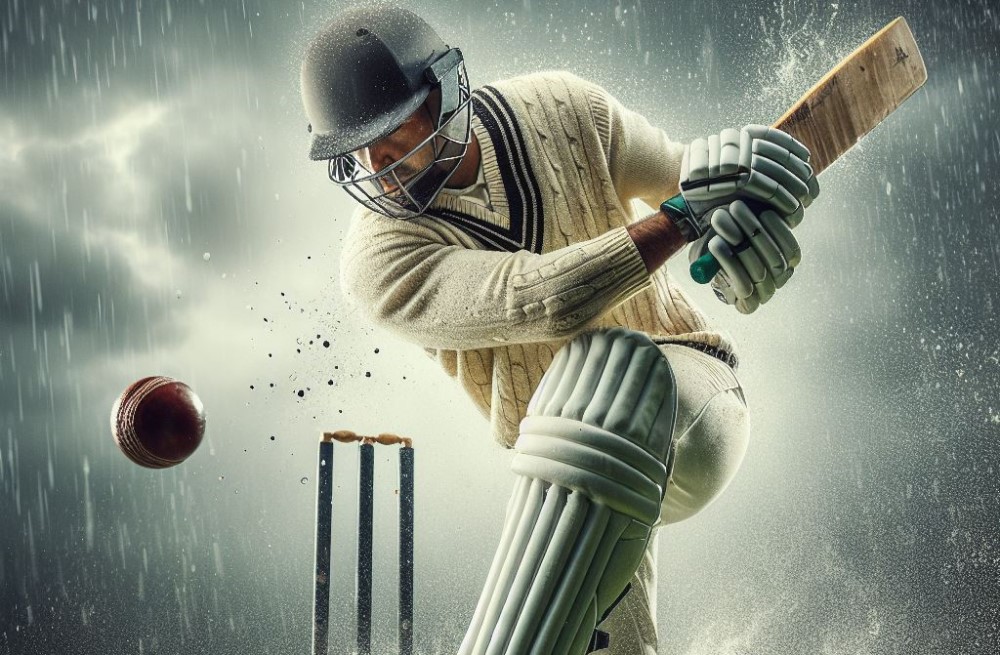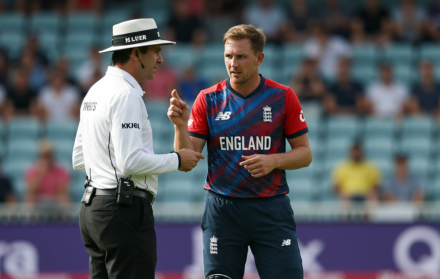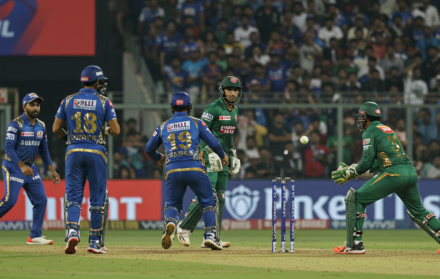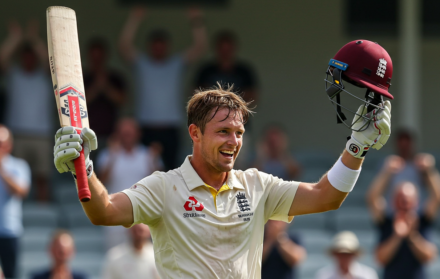
How To Choose The Right Bowling Length Based On Cricket Field Settings
In the game of cricket, choosing the right bowling length is crucial for a bowler’s success. Bowling length refers to the spot on the pitch where the ball pitches in relation to the stumps. It plays a significant role in determining the difficulty for the batsman and the opportunities for the bowler. Understanding the importance of bowling length and considering various factors can help bowlers make informed decisions on the field.
Bowling length is important in cricket because it directly affects the line the ball takes after pitching and the bounce it generates. A well-executed bowling length can create difficulties for the batsman, leading to mistimed shots, edges, or even wicket-taking opportunities for the bowler. On the other hand, a poorly judged length can give the batsman an advantage and allow them to score runs easily.
When choosing the right bowling length, several factors need to be considered. The type of pitch is a critical factor as it determines the level of bounce and the amount of seam movement. Different weather conditions can also impact the pitch and affect the ideal bowling length. The skill level and weaknesses of the batsman should be taken into account to exploit their vulnerabilities effectively.
Based on the cricket field settings, certain bowling lengths are commonly employed. Full-length bowling refers to pitching the ball right up to the batsman, encouraging a forward defensive stroke. Good length bowling aims to pitch the ball in the zone where it forces the batsman to make a decision between playing forward or back. Short of length bowling targets the area just short of the good length, while short-pitched bowling involves delivering bouncers to surprise the batsman.
To bowl the right length consistently, bowlers can follow some useful tips. It includes maintaining a consistent line and length, adjusting the length according to the batsman’s footwork and shot selection, observing and analyzing the pitch behavior, and understanding the batsman’s strengths and weaknesses.
By understanding the importance of bowling length and considering the various factors discussed, bowlers can effectively strategize their deliveries and contribute to their team’s success on the cricket field.
What is Bowling Length?

Bowling length refers to the specific spot on the cricket pitch where the ball bounces after being delivered by the bowler. It is an essential aspect of bowling as it determines the level of difficulty for the batsman to play a shot.
The right bowling length can create opportunities for the bowler to take wickets or build pressure on the batsman. Factors such as pitch conditions, weather, and the skill level of the batsman should be considered when choosing the appropriate length.
A good length delivery usually falls between the batsman’s off stump and top of the bails. Deliveries pitched too short or too full can be easier for the batsman to score runs. To be successful, bowlers must consistently hit the right length to challenge the batsman and create scoring opportunities for the fielding team.
Why is Bowling Length Important in Cricket?
Why is Bowling Length Important in Cricket? Bowling length is crucial in cricket as it directly impacts the success of a bowler. The length refers to where the ball bounces on the pitch. The right length can create opportunities for wickets by deceiving the batsman and generating movement off the pitch.
Factors like the type of pitch, weather conditions, and the batsman’s skill level and weaknesses should be considered when choosing the appropriate length. Different lengths, like full length, good length, and short-pitched bowling, are used strategically based on cricket field settings.
Bowling the right length requires accuracy and understanding of the game, providing an advantage to bowlers and putting pressure on batsmen.
Pro-tip: Practice and analyze the game to develop the ability to consistently hit the right length.
The Importance of Bowling Length
When it comes to bowling in cricket, getting the length right is crucial. In this section, we’ll uncover the importance of bowling length and what factors come into play when choosing the right one.
Don’t worry, we won’t leave you hanging – we’ll dive into all the information you need to up your bowling game. So, get ready to learn the ins and outs of finding that perfect length and turning the game in your favor.
Factors to Consider when Choosing the Right Bowling Length
When choosing the right bowling length in cricket, there are several factors to consider. These factors include the type of pitch, weather conditions, batsman’s skill level, and batsman’s weaknesses.
Firstly, it is important to assess the pitch conditions to determine how it will affect the bounce and movement of the ball. This will help in deciding the appropriate bowling length.
Secondly, weather conditions should be taken into account. Factors such as wind direction and speed can have an impact on the trajectory of the ball. Considering these factors will allow for better decision-making regarding the bowling length.
Furthermore, the batsman’s skill level should also be considered. Different players have different abilities, and some may struggle against a specific length. Adapting the bowling length accordingly can help in maximizing the chances of success.
Lastly, it is crucial to identify the weaknesses of the batsman. This will help in adjusting the bowling length to exploit those weaknesses effectively.
To increase the chances of success, it is important to choose the right bowling length based on these factors. Additionally, it is essential to adapt the approach in different situations and always assess the field settings to make strategic decisions.
Type of Pitch
When considering the type of pitch in cricket, the bowling length plays a crucial role. Different pitches require different lengths to be effective.
- On a green pitch, which offers more bounce and seam movement, bowlers should aim for a slightly fuller length to exploit the uneven bounce and induce edges.
- On a flat pitch with even bounce, the ideal length is slightly shorter, hitting the top of the stumps to challenge the batsman’s defense.
- On a dusty pitch that offers turn, bowlers should aim for a fuller length to make the most of the inconsistent bounce and induce mistakes from the batsmen.
Understanding the type of pitch is essential for bowlers to adjust their lengths accordingly and maximize their effectiveness in different conditions.
Weather Conditions

When it comes to selecting the appropriate bowling length in cricket, taking into account the weather conditions is of utmost importance. The weather conditions can have a significant impact on the state of the pitch, which can be influenced by elements such as rain, sunlight, and wind.
In instances of damp or wet conditions, it is advisable for bowlers to slightly pitch the ball fuller. This makes it more challenging for batsmen to execute drives or cuts. Conversely, in dry and sunny conditions, the ball tends to bounce with greater intensity. Hence, a slightly shorter length is preferred to create more opportunities for edges and catches.
By adjusting their bowling length according to the weather conditions, bowlers can optimize their effectiveness and pose difficulties for batsmen to score freely.
Pro-tip: Stay updated on the weather forecast and adapt your bowling length accordingly. This will enable you to exploit the conditions and gain an advantageous position over the opposition.
Batsman’s Skill Level
The skill level of the batsman, which is essential in determining the right bowling length in cricket, plays a crucial role.
- For batsmen with strong technique and vast experience, the bowler should aim for a fuller length to challenge them at the front or back foot.
- Conversely, for novice or young players, it is effective to bowl a good length that allows them to make mistakes and induces false shots.
- Additionally, analyzing batsmen’s weaknesses also guides the choice of bowling length. Exploiting their discomfort against short-pitched deliveries by bowling at a shorter length can lead to wickets.
Remember, assessing the batsman’s skill level is essential in adapting the ideal bowling length for a successful outing.
Batsman’s Weaknesses
Understanding a batsman’s weaknesses is crucial when choosing the right bowling length in cricket.
- Technique vulnerabilities: Exploit weaknesses like difficulty playing off the back foot or struggles against spin bowling.
- Shot preferences: Identify shots a batsman is uncomfortable playing, such as hook shots or shots outside off stump.
- Temperament: Some batsmen may have trouble handling pressure or aggressive bowling. Target their mental strength.
- Injury history: If a batsman has a history of injury to a particular body part, bowl in areas that exploit their weakness.
Bowling Lengths based on Cricket Field Settings

Bowling on a cricket field is a strategic art, and understanding the right lengths can make all the difference. In this section, we’ll uncover the secrets behind the various bowling lengths based on cricket field settings.
From the full-length deliveries that keep the batsman guessing to the perfectly executed good length deliveries that can induce a false shot, we’ll explore it all. We’ll touch upon the challenges of bowling short of length and the daring short-pitched deliveries that can inflict fear in the batsman’s mind. Get ready to dive into the fascinating world of bowling lengths in cricket!
Full Length Bowling
Full-length bowling, also known as bowling at a full length, is a crucial technique in cricket that aims to target the batsman’s stumps. It involves pitching the ball on or just outside the off stump, urging the batsman to play a shot. This full length allows the ball to move inwards, challenging the batsman to make accurate shots.
By consistently bowling at a full length, bowlers increase their chances of taking wickets, especially if the pitch offers movement. Bowling at a full length can trap the batsman in uncertainty and force them to make mistakes. This technique requires a skilled bowler who can consistently hit the right areas.
Pro-Tip: When bowling at a full length, it is important to focus on maintaining a disciplined line and length while varying your pace to keep the batsman guessing. Practice and adapt to different field settings and match situations to optimize your effectiveness as a bowler.
Good Length Bowling
Good length bowling is a crucial technique in cricket as it involves delivering the ball at an optimal length to create difficulties for the batsman. If you want to execute good length bowling, here are some key aspects to consider:
- First, study the pitch conditions to understand how the ball behaves.
- Next, adapt to the weather conditions to assess swing, seam, or spin.
- It’s also important to analyze the skill level and weaknesses of the batsman.
- Aim to bowl just outside the off stump. This tactic forces the batsman to play a shot and potentially induces an edge.
- Another useful tip is to vary the length slightly. This technique keeps the batsman guessing and prevents easy scoring opportunities.
- Lastly, work in tandem with the field setting to create pressure and restrict scoring options.
By mastering the art of good length bowling, bowlers can significantly increase their effectiveness and contribute to the team’s success.
Short of Length Bowling
Short of length bowling is a crucial technique in cricket, particularly in limited overs formats. It involves delivering the ball in a length that is slightly shorter than the good length, making it difficult for batsmen to play attacking shots. This technique of bowling, known as short of length bowling, aims to create discomfort and induce mistakes from the batsmen.
Advantages of short of length bowling include generating bounce and creating doubt in the batsman’s mind, leading to mistimed shots and wickets. It requires precision and accurate execution to avoid being too short and giving away easy runs.
Short-pitched Bowling
- Short-pitched bowling is an aggressive tactic used by bowlers to unsettle batsmen and induce mistimed shots or dismissals. Here are the steps to effectively execute this strategy:
- Assess the batsman’s strengths and weaknesses to determine if short-pitched bowling is suitable.
- Choose the right delivery speed and trajectory to make the ball rise sharply towards the batsman’s body or head.
- Target the batsman’s blind spots, such as the top edge or the area between the ribs and shoulder.
- Use variations like bouncers or slower short balls to keep the batsman guessing and under pressure.
Tips for Bowling the Right Length

When it comes to bowling in cricket, getting the right length is crucial for success. Here are some tips for bowling the right length:
- Maintain consistency: Aim to bowl each delivery at a consistent length, whether it’s a good length or a fuller length.
- Assess the pitch: Consider the nature of the pitch, if it’s fast or slow, and adjust your length accordingly.
- Quick observation: Observe the batsman’s footwork and body language to gauge their comfort level and adjust the length accordingly.
- Experiment: Don’t be afraid to try variations in length to keep the batsman guessing and put them under pressure.
- Adapt to the field settings: Take into account the placement of fielders and try to bowl lengths that maximize the fielding positions.
In cricket history, Australian bowler Glenn McGrath was a master at bowling the perfect length. His ability to consistently hit the off-stump line and length troubled batsmen from all around the world.





